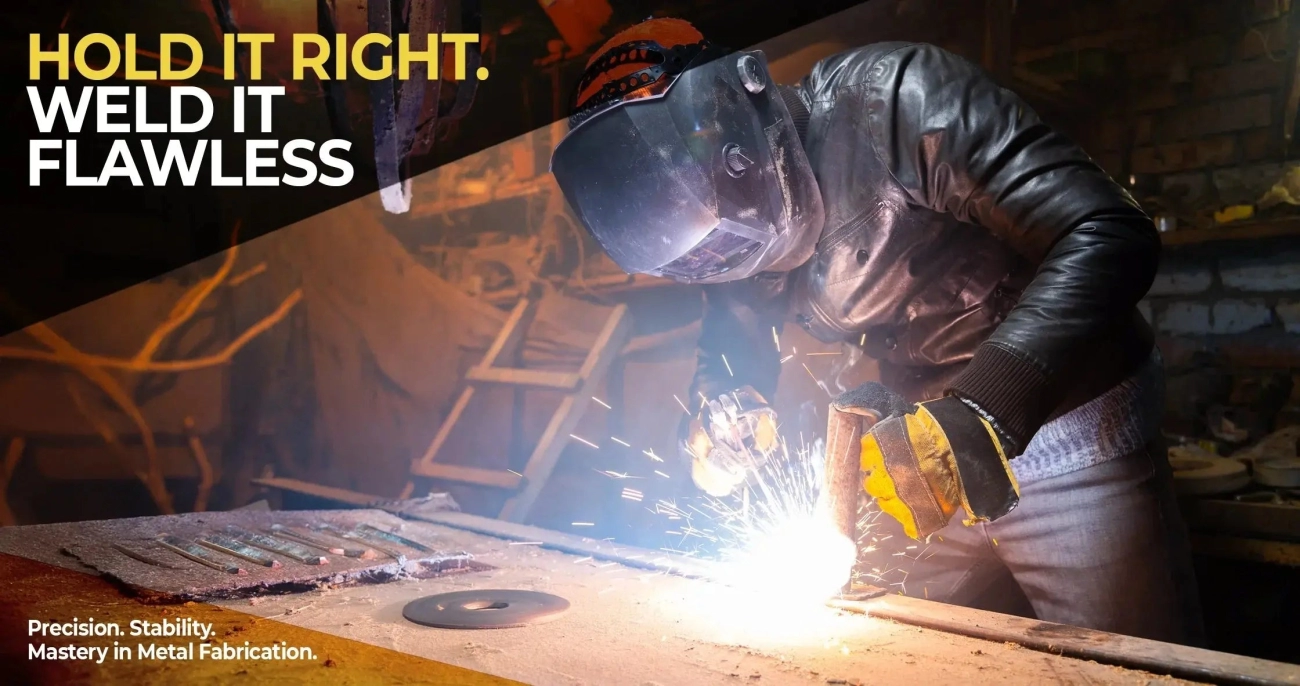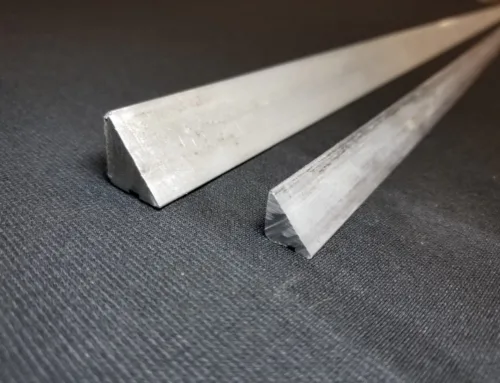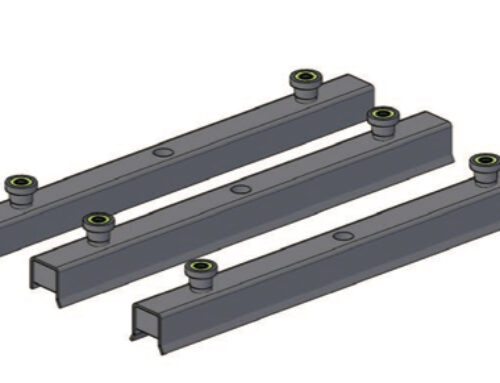What Exactly Are Welding Magnets
Welding magnets are specialized magnetic tools designed to hold metal pieces securely at specific angles during welding and metal fabrication. They enable hands-free work by firmly positioning ferrous metal parts, making tasks like 90-degree weld positioning easier and more precise. These magnets come in various types, including arrow welding magnets, square holders, adjustable models, and magnetic ground clamps, each tailored to different welding needs.
Historically, welding magnets have evolved from simple permanent magnet blocks to highly engineered rare-earth magnets, like neodymium welding magnets, offering stronger holding forces and improved temperature resistance. This evolution has made welding magnets indispensable tools in both DIY garage projects and professional metalworking environments.
The importance of welding magnets in metalwork can’t be overstated. They enhance efficiency, provide stability, and prevent errors during welding, helping welders maintain accuracy without extra clamps or jigs. At NBAEM, we bring deep expertise in magnetic materials, offering premium magnetic solutions designed for durability and superior performance in demanding welding applications. Our focus on quality ensures our welding magnets meet both industrial standards and the practical needs of metalworkers.
For more about magnetic materials behind our products, explore our detailed insights on ferrite magnets.
How Welding Magnets Work
Welding magnets use magnetic force to hold metal pieces steady, giving you hands-free control for accurate welds. They rely on strong magnetic fields—often from neodymium or rare-earth magnets—to keep ferrous metals locked in place, especially at common angles like 45, 90, or 135 degrees. This angle stability is key for consistent, clean weld joints.
Key Specs to Know
- Holding Force: Measured in pounds, this tells you how strong the magnet grips metal surfaces. For most welding jobs, look for magnets with at least 20 to 50 pounds of holding force.
- Temperature Tolerance: Welding gets hot, so magnets need to withstand heat without losing power. Typical welding magnets handle up to around 176°F (80°C), but premium types can go higher.
- Size and Shape: Different shapes fit different tasks—arrow magnets for corners, square magnets for flat surfaces, or adjustable holders for custom angles.
Common Issues with Welding Magnets
- Arc Blow: A magnetic field can cause inconsistent arcs or weld beads, known as arc blow. Choosing magnets with the right strength and placement helps reduce this.
- Heat Damage: Exposing magnets to excessive heat can weaken them or cause failure, so it’s smart to pull magnets away during long welding runs or use high-temp rated versions.
Magnet Type Comparison
| Magnet Type | Holding Force | Temperature Tolerance | Best Use Cases |
|---|---|---|---|
| Arrow Welding Magnets | Medium | Up to 176°F | 45°, 90°, 135-degree welds |
| Square Holders | High | Up to 176°F | Larger flat surfaces |
| Adjustable Magnets | Variable | Up to 176°F | Custom angle positioning |
| Premium Neodymium | Very High | Up to 302°F (150°C) | Heavy-duty, high heat welds |
NBAEM Premium Neodymium Magnets
NBAEM supplies premium neodymium welding magnets built for the heat and strength welding demands in the U.S. market. Their magnets deliver superior holding power while resisting heat-related magnetic loss. These rare-earth magnets are perfect if you need durable, reliable magnetic welding clamps that last through tough jobs and tight deadlines.
Types of Welding Magnets
Welding magnets come in different shapes and designs, each suited for specific tasks. Here’s a quick look at the common types you’ll find on the market.
Arrow Welding Magnets
These are shaped like an arrow with strong magnetic tips to hold metal pieces at precise angles. They’re perfect for positioning pipes or rods when you need a hands-free solution. Ideal for 45, 90, and 135-degree welds, arrow welding magnets make clamping quick and reliable.
Square and Angle Holders
Square welding magnets hold two pieces of metal at a perfect 90-degree angle. Angle holders are similar but often offer multiple fixed angles. These are the go-to tools for frame-building, box construction, and general metal assembly where strong, steady holds matter.
Adjustable and Pivoting Models
For jobs needing flexibility, adjustable welding magnets let you change angles on the fly. Pivoting models swing around, making it easier to adapt when working with odd shapes or custom builds. They’re great for advanced welding and assembly tasks.
Magnetic Ground Clamps
These magnets attach your welding ground cable directly to the workpiece. Magnetic ground clamps improve connection stability and reduce the hassle of clipping to awkward spots. They’re especially handy for heavy-duty jobs and outdoor work.
Pros and Cons of Welding Magnet Types
| Magnet Type | Pros | Cons |
|---|---|---|
| Arrow Magnets | Precise angle holding, easy setup | Limited to specific angles |
| Square & Angle Holders | Stable 90-degree or multi-angle hold | Bulkier, less flexible |
| Adjustable/Pivoting | Flexible angles, versatile | Usually more expensive |
| Magnetic Ground Clamps | Reliable grounding, quick attach | Limited to ferrous metals |
NBAEM offers a line of customizable, industrial-grade welding magnets designed to meet demanding U.S. markets. These magnets combine durable materials with strong hold and heat resistance, which means they hold up well in busy shops and construction sites.
For anyone looking to explore the magnetic basics tied to welding tools, NBAEM’s resources on magnetic forces and neodymium magnets offer solid background info. You can learn more about the key properties here and how heat affects them here.
Whether it’s arrow welding magnets or magnetic ground clamps, picking the right type can make all the difference in your metalworking projects.
Benefits of Using Welding Magnets

Welding magnets offer clear advantages that make metalwork faster and safer. Here’s why they’re a smart investment for anyone who welds, from hobbyists to pros.
Efficiency and Time Savings
- Hands-free welding tools hold pieces steady, freeing up your hands to work smarter.
- Quick setup means you can position metal parts in seconds, not minutes.
- Consistent 90-degree weld positioning cuts down on rework.
Safety and Ergonomics
- Reduces the need to hold hot metal manually, lowering burn risk.
- Keeps metal parts stable, preventing slips that cause injuries.
- Minimizes awkward body positions, easing strain on your back and wrists.
Precision for Professional Welders
- Maintains consistent angles for clean, strong welds every time.
- Rare-earth magnet holders ensure firm grip even on uneven surfaces.
- Prevents arc blow by holding ferrous metals firmly, improving weld quality.
Cost-Effectiveness and Durability
- Built tough to last through high heat and heavy use.
- Saves money by reducing wasted materials and time.
- Many models like NBAEM’s neodymium welding magnets offer long-term value without breaking the bank.
Real-World Success Case Study
| Situation | Result Without Magnets | Result With Welding Magnets |
|---|---|---|
| Steel frame assembly | Frequent part shifting -> delays | Stable parts -> 30% faster finish |
| Small DIY home welding | Struggled with awkward holding | Easy positioning -> safer, cleaner welds |
| Professional shop welding | Rework due to angle errors | Accurate holds -> improved customer satisfaction |
Welding magnets bring speed, safety, and accuracy to your projects — making them a must-have tool for metalwork in the U.S. Whether you’re on a job site or in your garage, the right magnet can change how you weld.
Practical Applications of Welding Magnets
Welding magnets are a game-changer whether you’re working on DIY projects in your home garage or tackling professional construction jobs. For hobbyists, these magnetic welding clamps make it easy to hold metal pieces steady, freeing up your hands for precise welding or cutting. The 90-degree weld positioning feature is especially handy when you need exact angles without fuss.
In professional manufacturing and construction, welding magnets speed up assembly lines and improve accuracy on the spot. They help keep ferrous metal parts aligned firmly during welding, which means stronger, cleaner seams with less rework. Adjustable and pivoting magnetic holders are popular here for their flexibility on complex builds.
Advanced assembly and polishing also benefit from rare-earth magnet holders. They securely hold parts without slipping, lowering the risk of mistakes and improving workflow speed. Switchable magnetic clamps let you quickly attach or release parts, which comes in handy when working on repeat components.
If you’re thinking of adding welding magnets to your setup, here are a few tips to make the most of them:
- Use different magnet shapes like arrow magnets for tight spots and square holders for flat surfaces.
- Keep magnets clean and free from weld slag to maintain strong hold.
- Pair welding magnets with magnetic ground clamps to reduce arc blow during welding.
- Plan your workflow to place magnets early in the setup phase to save time.
For businesses needing a reliable source of industrial-grade magnets, NBAEM offers bulk supply solutions tailored to meet American market demands. Their neodymium welding magnets deliver consistent holding power and durability, helping professionals get the job done right every time.
How to Select and Maintain Welding Magnets
Choosing the right welding magnet starts with understanding your needs. Here are key factors to keep in mind:
- Holding Force: Make sure the magnet can hold your workpieces securely, especially if you work with heavier metals.
- Magnet Type: Neodymium welding magnets offer strong grip but watch their heat tolerance. For higher heat environments, consider ferrite magnets.
- Angle and Shape: Pick magnets like angle holders or square holders based on the weld angles you frequently use—90-degree positioning is common.
- Heat Resistance: Welding generates heat; choose magnets rated for higher temperatures to avoid losing magnetism.
- Safety Certifications: Look for magnets that comply with industry standards to ensure reliability and safety.
- Size and Portability: Depending on your workspace and project size, select magnets that are easy to handle without compromising strength.
Maintenance Best Practices
- Keep welding magnets clean and free from metal debris to maintain strong grip.
- Avoid overheating magnets by removing them from welding areas when not in use.
- Store magnets in dry places to prevent rust on the metal casing.
- Inspect magnets regularly for cracks or damage.
- Use protective covers if provided to extend magnet life.
Common Mistakes to Avoid
- Using magnets beyond their temperature rating, causing permanent loss of magnetism.
- Overloading magnets with metal heavier than their holding capacity.
- Ignoring arc blow effects that can disrupt magnet performance.
- Not cleaning metal surfaces before applying magnets, which weakens hold.
Evaluation and Upkeep Checklist
- Verify holding strength right before each project.
- Confirm the magnet maintains shape and integrity.
- Check magnet temperature rating matches your welding setup.
- Clean and store magnets properly after use.
- Replace worn or damaged magnets promptly.
At NBAEM, we support customers with tailored advice to fit your specific welding needs. Our industrial-grade neodymium magnets come with specifications suited for various applications, especially useful for hands-free welding tools and reliable ferrous metal positioning. For more on magnetic basics, check out our detailed guide on magnetic hysteresis.





Leave A Comment